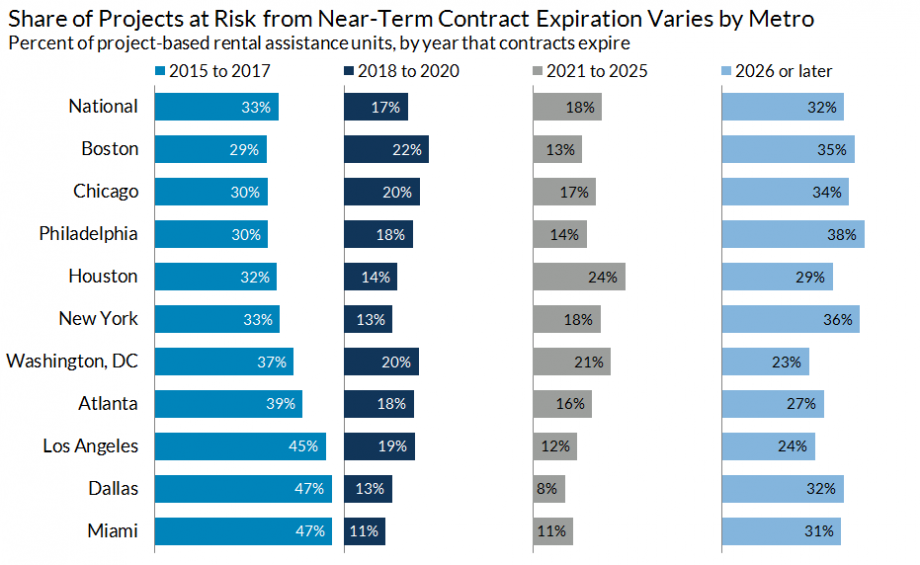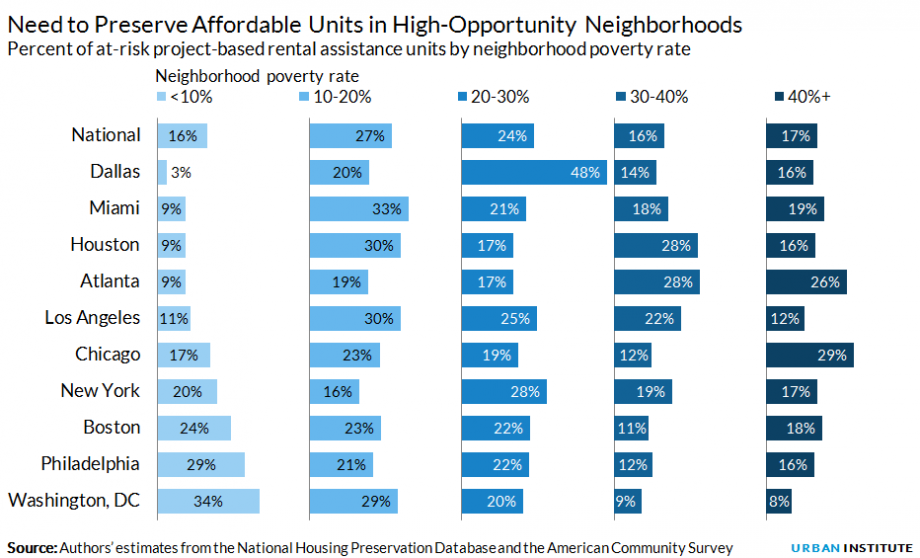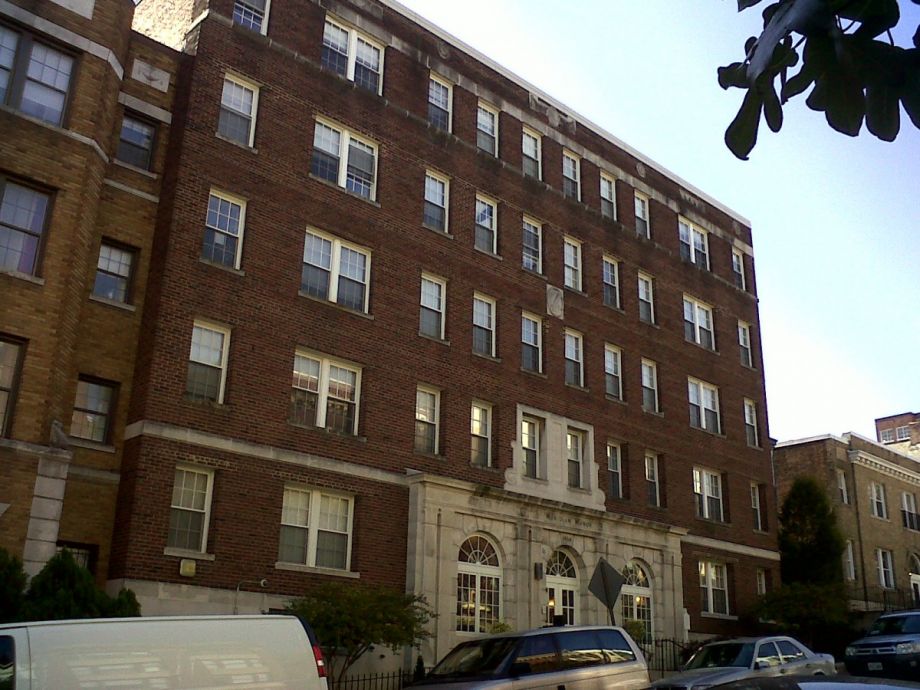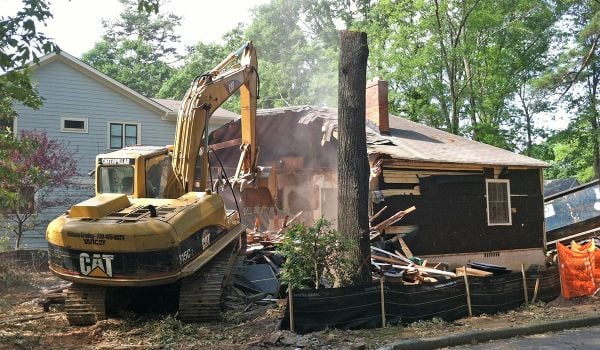Affordable units in high-opportunity neighborhoods give low-income families access to resources such as quality schools, transportation and jobs, improving chances at upward mobility. Affordable housing is one of a range of housing policies and programs that have the potential to promote economic mobility. Yet without local action, affordable housing units are often at risk of loss from the housing supply.
One important mechanism for enabling families to afford homes in high-quality areas is federal project-based rental assistance (PBRA), where private owners receive a subsidy attached to a specific unit. PBRAs house over 1.2 million low-income households and are a critical source of affordable housing in many communities. But of the approximately 1.34 million active PBRA units, over 446,000 units (33 percent) are at risk of losing their affordability status, according to our calculations from the National Housing Preservation Database.
The vast majority of developments with PBRA units were built between the 1970s and 1990s, often but not always in neighborhoods with higher poverty. As some of these neighborhoods experience new investment and improvements to neighborhood quality, preserving existing PBRA units is critical to keep subsidized units on the market and allow families to stay in the neighborhoods where they’ve built ties. It is also important to preserve properties where market conditions have vastly improved and the pressures to convert to private development are high. Preservation is significantly cheaper than building new units, costing about one-half to two-thirds as much and, when it includes renovations, leads to energy efficiencies. And by preserving these units, localities retain and leverage the federal investment already attached to the unit.
Affordable Housing Preservation in High-Opportunity Neighborhoods
There are two main risk factors for loss of affordable units: properties in poor physical condition and expiring contracts that allow owners to leave affordability programs and rent units on the private market or convert them to condominiums. Of the 446,000 PBRA units currently at risk, the majority (397,000 units) are so because of contracts that expire within the next 24 months (the owner, however, may choose to renew). Yet there’s significant variation among metropolitan areas in the share of units at risk. In Dallas and Miami, almost half of PBRA contracts expire in the next two years, compared to 30 percent in Chicago, Boston and Philadelphia.

Although only a small portion of owners opt not to renew their affordability leases (around 7 or 8 percent according to some studies) after expiration, those that choose not to renew often have units in hot housing markets. That’s why it’s up to local leaders and housing advocates to understand the landscape of affordable housing and take action to preserve at-risk units.
With constrained resources, local leaders often must prioritize which units receive significant preservation attention. For generating economic mobility, we should focus on units within high-opportunity neighborhoods, because they are likely the primary source of affordable housing in these neighborhoods. These units face the most pressure to convert to market-rate units, because owners can capture higher rents or sell at a high price. And yet, we know from research that low-poverty neighborhoods are more likely to support families’ efforts at upward mobility.
The story of Meridian Manor in the gentrifying Columbia Heights neighborhood of Washington, D.C. shows what preservation of affordable housing looks like in action. Residents of Meridian Manor self-organized after being displaced from their 34-unit apartment building due to poor housing conditions and a negligent landlord. In 2000, a partnership to restore and preserve the building arose among the residents, a local non-profit developer, the National Housing Trust, and Enterprise Community Partners.
Through creative use of various local and federal funding sources, including a 15-year project-based rental assistance contract, Meridian Manor was fully renovated, converted to an affordable cooperative, and outfitted with a new playground and computer lab. The newly renovated property re-opened in 2002.
While Meridian Manor is a preservation success story, today there are many other affordable units located in low-poverty neighborhood that without intervention are at risk of losing their affordability status. Thirty-four percent of the at-risk PBRA units in the DC metro area are in neighborhoods with poverty rates below 10 percent. New York, Boston and Philadelphia metros have similarly high rates of at-risk units in low-poverty neighborhoods.

Using Data to Preserve Affordable Housing
How do we preserve affordable housing? The key is to first identify units at risk of loss. The National Housing Preservation Database provides information on risk for federal-assisted rental units, and local databases like the DC Preservation Catalogue add information on local housing subsidy programs.
Communities will then take various approaches to preserving at-risk affordable units. Massachusetts has a promising program to preserve publicly assisted units that gives the Department of Housing and Community Development the opportunity to purchase an assisted property offered for sale. At the local level, DC has a network of community-based organizations, government agencies and research institutions that use data to take action to preserve subsidized units. And in Chicago, the Preservation Compact has assembled new kinds of capital, such as the Energy Savers Program, to bring down operating costs and facilitate preservation of affordable rental housing. Although local conditions determine the exact preservation strategy, the need to preserve units, particularly in high-opportunity neighborhoods should be a priority.
This post originally appeared on Urban Wire as part of the Housing Assistance Matters Initiative, which educates Americans about the vital role of housing assistance. The initiative is a project of the Urban Institute, made possible with support from Housing Authority Insurance, Inc. (HAI, Inc.). The Urban Institute is a nonprofit, nonpartisan research organization and retains independent and exclusive control over substance and quality of any Housing Assistance Matters Initiative products. The views expressed in this product are those of the authors and should not be attributed to the Urban Institute or HAI, Inc.
Erika Poethig is director of urban policy initiatives, and Reed Jordan is a research associate with the policy advisory group, for the Urban Institute.
















